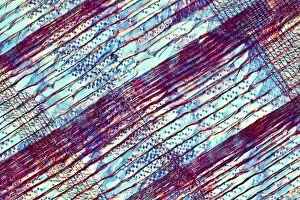Polarisation Collection
Polarisation, a phenomenon that has fascinated scientists and artists alike, encompasses various aspects of our world
All Professionally Made to Order for Quick Shipping
Polarisation, a phenomenon that has fascinated scientists and artists alike, encompasses various aspects of our world. From chromatic polarisation in color lithography to the groundbreaking discoveries made by Scottish physicist David Brewster in 1868, this concept has left an indelible mark on history. The contributions of French physicist Biot Jean Baptiste cannot be overlooked when discussing polarisation. His extensive research paved the way for advancements such as the invention of polarising filters, showcased beautifully in artwork C017 / 7125 and C017 / 7126. These filters have revolutionized photography and allowed us to capture stunning images with enhanced clarity. Beyond the realm of optics, cellular polarity also plays a crucial role in understanding biological processes. Illustrated vividly in C018 / 0775, this concept reveals how cells organize themselves asymmetrically to perform specific functions within living organisms. Even magnetism is not immune to the effects of polarisation. The magnet used by Faraday (C016 / 3678) demonstrates how magnetic fields can align or orient themselves based on external influences—a testament to nature's intricate workings. Returning to Biot's legacy as a French physicist, his name echoes throughout history due to his significant contributions. His work continues to inspire generations of scientists who delve into the complexities of polarization and its far-reaching implications. But it is not just scientific endeavors that benefit from understanding polarization; even everyday materials like plastic reveal fascinating insights under microscopic examination. Defects within plastic become apparent through light micrographs such as those captured in C018 / 0775 and C018 / 0776—reminding us that even imperfections hold their own unique beauty. Lastly, we explore silver fir wood through another captivating light micrograph—an image that showcases both its structural intricacies and inherent polarization properties. This glimpse into nature's design reminds us once again why studying polarization remains an endless source of wonderment for scientists and artists alike. Polarisation encompasses a vast array of disciplines and subjects.



















